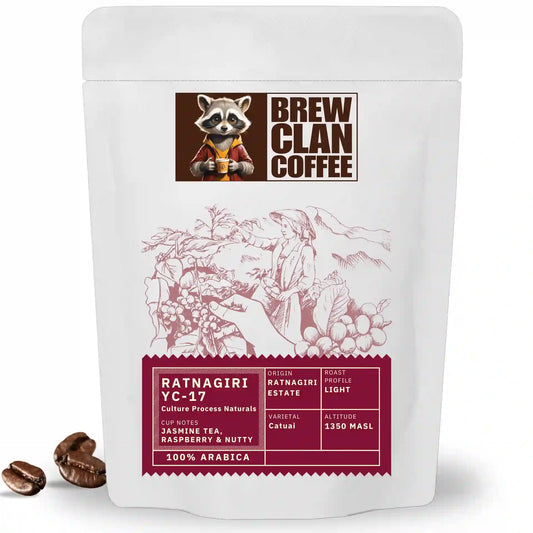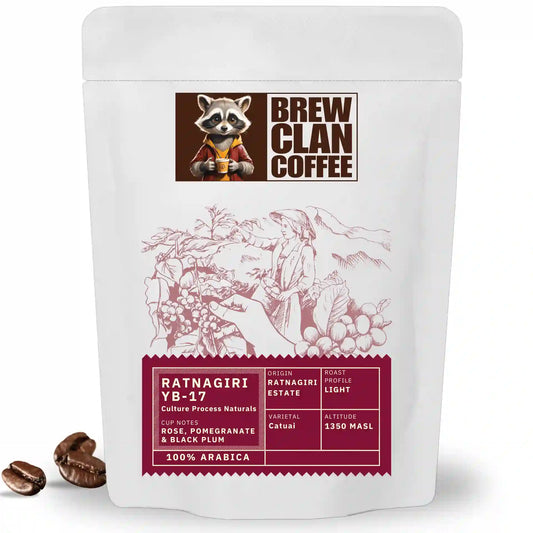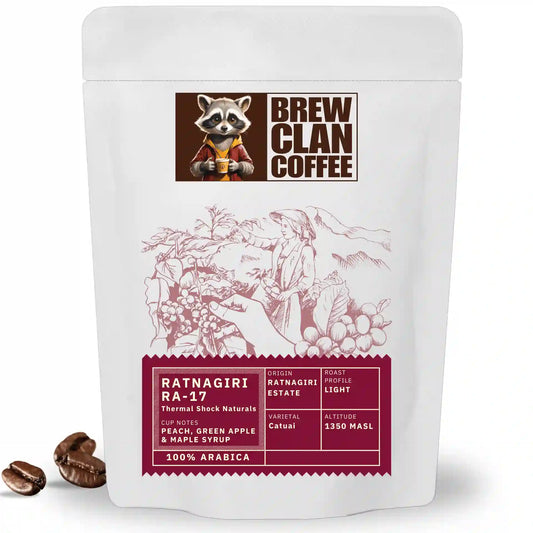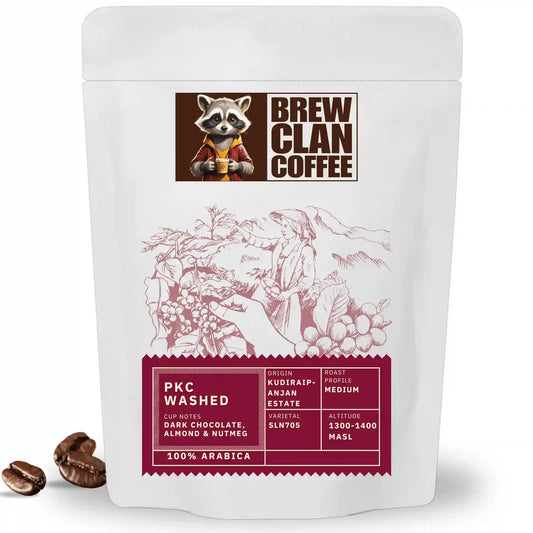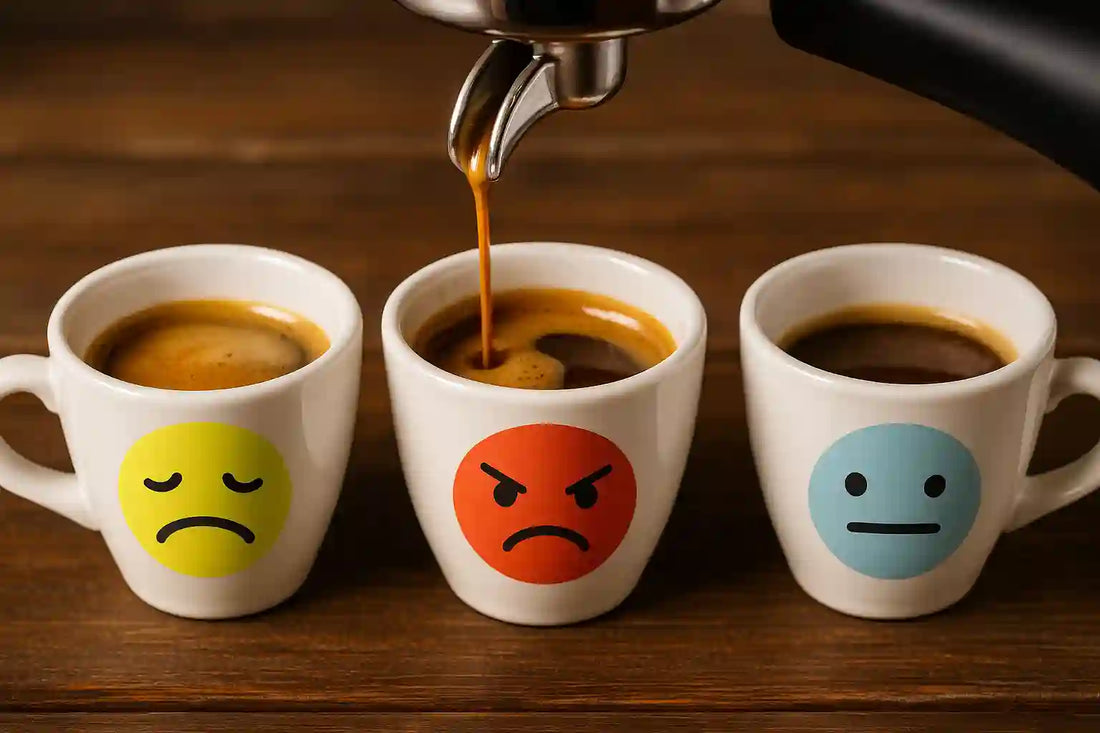
Why is My Espresso Shot Sour, Bitter, or Weak?
Share
You finally pulled that shot…
You’ve been practicing your tamp, your grinder’s dialled in, and the espresso machine is hissing like it’s about to deliver magic.
The shot looks great, golden crema, rich flow, until you take a sip.
And suddenly… your face scrunches up.
It’s sour. Or maybe it’s bitter. Or somehow, it just tastes weak and watery.
Before you question all your life choices (or your roaster), relax. Every coffee enthusiast has been here. Even pros pull off-tasting shots sometimes. The good news? Espresso doesn’t randomly go bad, it’s just reacting to the way you brewed it.
Let’s break down what’s actually happening in that cup, and how to fix it.
Key Takeaways
- Sour espresso = under-extracted: Go finer, hotter, and longer.
- Bitter espresso = over-extracted: Go coarser, cooler, and shorter.
- Weak espresso = uneven extraction: Improve grind, tamp, and freshness.
- Aim for balance: 18g in, 36–40g out, ~25–30 seconds at 93°C.
- Clean, weigh, and taste: These three habits separate great espresso from random luck.
Espresso Extraction - The Real Story (Without the Jargon)

Espresso is basically hot water forced through a compact bed of coffee under pressure. That’s it. But it’s one of the most sensitive brewing methods in the world, every variable matters.
If the water runs too fast, you’ll get under-extraction, not enough of the coffee’s sweetness or body comes out, so the shot tastes sour.
If it runs too slow, that’s over-extraction, the water keeps pulling harsh, bitter compounds.
And if the water just finds easy paths through the puck (called channeling), it won’t extract evenly, leading to a weak, flat espresso.
Espresso brewing is like tuning a guitar. You don’t overhaul the whole thing; you just tweak the strings until everything hums together.
Let’s decode each problem, one by one.
Sour Espresso - The Sharp One

How it tastes:
Tangy, lemony, green apple-like. Feels sharp on the tongue, with no sweetness or finish.
Why it happens:
- Under-extracted: The water didn’t spend enough time pulling flavor.
- Grind is too coarse.
- Shot ran too fast (shorter than 20 seconds).
- Water temperature too low.
- Coffee roasted too recently (gasses still escaping can mess with extraction).
How to fix it:
✅ Grind finer.
The smaller the grind, the more surface area for water to extract flavor from.
✅ Aim for 25–30 seconds shot time.
A quick shot = sourness. Give it a few more seconds.
✅ Raise your water temperature.
Ideal range: 93–95°C. Too cool and the acids dominate.
✅ Rest your coffee.
If your beans were roasted yesterday, give them 3–5 days to “degas.” Freshness is great, but espresso needs stability.
Think of sour espresso as a teenager: impatient, full of energy, and not quite developed. Give it a little more time and pressure, and it matures beautifully.
Bitter Espresso, The Overachiever

How it tastes:
Burnt, dry, harsh. Think over-toasted bread, over-steeped tea, or plain dark chocolate gone wrong.
Why it happens:
- Over-extraction: the water stayed too long and pulled bitter compounds.
- Grind too fine.
- Water temperature too high.
- Shot too long (over 35 seconds).
- Beans too old or over-roasted.
- Dirty equipment: old coffee oils go rancid and cling to flavor.
How to fix it:
✅ Grind coarser.
Loosen it up a bit so water can flow freely.
✅ Stop the shot earlier.
Once it hits ~36–40g out from 18–20g in, stop the extraction.
✅ Lower the water temperature.
90–92°C helps if you’re getting dryness or harsh bitterness.
✅ Use freshly roasted beans.
Anything over 4–5 weeks old will start to flatten and taste woody.
✅ Clean your gear.
Run a backflush or wipe your portafilter regularly. Burnt oils are bitterness magnets.
If your espresso tastes like licking burnt toast, it’s been overcooked. Time to turn down the heat.
Weak or Watery Espresso, The Flat One

How it tastes:
Dull, hollow, lacks body. It might have crema, but no “oomph.”
Why it happens:
- Grind too coarse - water flows too easily.
- Low coffee dose.
- Uneven tamp - water finds shortcuts through loose spots.
- Stale beans with no natural oils left.
- Machine pressure too low (below 9 bars).
How to fix it:
✅ Grind finer.
This is usually the biggest culprit.
✅ Use enough coffee.
A double shot should start with ~18–20g in the basket.
✅ Tamp evenly.
Firm and level, not Hulk strength - just enough to remove air pockets.
✅ Check your beans.
Old beans = flat flavor. Stick to freshly roasted.
✅ Machine matters.
Some entry-level machines brew below ideal pressure. If so, focus on grind and ratio to balance body and taste.
A weak espresso usually means the water took a shortcut. Don’t let it cheat its way through, make it work for flavor.
Espresso Troubleshooting Table (At-a-Glance)
|
Problem |
Tastes Like |
Common Causes |
Fix |
|---|---|---|---|
|
Sour |
Sharp, lemony |
Under-extracted, coarse grind, cold water |
Finer grind, longer shot, hotter water |
|
Bitter |
Burnt, harsh |
Over-extracted, fine grind, hot water |
Coarser grind, shorter shot, lower temp |
|
Weak |
Flat, watery |
Uneven tamp, coarse grind, stale beans |
Finer grind, even tamp, fresh beans |
Pro tip: screenshot or print this table, it’ll save you next time your espresso misbehaves.
The Sweet Spot: When You Finally Nail It
When everything clicks, your espresso should taste balanced.
You’ll feel a gentle brightness up front (acidity), smooth sweetness in the middle (caramel, chocolate, or nuts), and a lingering finish.
Aim for:
- 18g in → 36–40g out
- 25–30 seconds
- 93°C water
When it’s right, you’ll know. The crema looks like sunset and your tongue doesn’t argue.
Small Habits That Make a Big Difference
- Purge the group head before every shot, clears stale water.
- Weigh your dose and yield (even a cheap scale helps).
- Clean daily. Oils are flavor killers.
- Use filtered water - hard water can dull taste and damage your machine.
- Taste right away. The fresher your taste memory, the faster you learn what went wrong.

Espresso isn’t hard. It’s just honest. It tells you exactly what you did wrong, and what to fix next time.
To Conclude - Every Bad Shot Is Just Training
Every bitter, sour, or weak espresso you make is a lesson in disguise.
No barista became good overnight, they just learned to pay attention to what each cup was saying.
So next time you take that sip and wince, don’t give up. You’re not doing it wrong; you’re just halfway to doing it right.
Adjust. Taste. Repeat.
And when you finally get that balanced, syrupy, chocolate-and-citrus espresso, you’ll know every tweak was worth it.
FAQs - Frequently Asked Questions
Q1. Why does my espresso taste sour even with a fine grind?
Try raising your water temperature and increasing extraction time, sourness often means under-extraction or overly fresh beans.
Q2. My espresso is bitter even with a short shot - what gives?
It could be too hot or dirty equipment. Check your temperature and clean your portafilter and group head.
Q3. How can I make my espresso stronger without bitterness?
Use more coffee (dose up by 1–2g), maintain 25–30 seconds extraction, and grind slightly finer.
Q4. Does roast level affect taste balance?
Yes. Light roasts lean bright (more acidity), dark roasts lean bitter. Adjust grind and temp accordingly.
Q5. How long should a good espresso shot take?
25–30 seconds for a double shot (18–20g in → 36–40g out).

